2022 Reporting

On a late summer morning in Springfield, Missouri, Lymon Sanderson stood in front of his 400-square-foot house and drank in the vibrant oranges, blues and greens of his neighbors’ homes.
Sanderson lives in a tiny home community known as Eden Village. It was built by a religiously affiliated nonprofit called The Gathering Tree to provide people without homes a place to live.
Tiny homes have become popular in recent years with hundreds of communities popping up all across the country. Some municipalities have embraced this trend and found that tiny home communities could provide a way to build more dense and affordable housing to the people who need it most.
By Hannah Loder | Read the full story


Mayor Muriel Bowser has introduced the Career Mobility Act Plan, a rent and income support plan that started its pilot phase at the end of September. This “Career MAP” program aims to help 600 selected families with transitioning out of homelessness by providing personalized career support, up to $10,000 in cash, and rent assistance.
The program seeks to aid a specific set of families who do not require permanent housing vouchers but may face a “benefits cliff,” which occurs when an increase in income edges a family out of eligibility for public assistance. In these cases, the total take-home pay of a family actually decreases due to the loss in benefits. The families selected for the program are currently participating in the Family Re-Housing Stabilization Program, which offers a 12-month rent subsidy for families facing this benefits gap.
By Nora Scully and Franzi Wild | Read the full story


A year after D.C. launched a pilot program to clear homeless encampments, approximately 72% of those in the pilot have been housed.
Why it matters: The CARE program – which prompted an outcry when a Bobcat removing tents at one encampment lifted a man inside a tent — divided the city when it was introduced last fall.
By Chelsea Ciruzzo | Read the full story


Don’t expect me to mince words here. The DC government and, thus, the entire city, particularly low-income residents, have been drowning in high-cost mediocrity and breathtaking incompetence for decades. Some of the adverse consequences of that reality were recently laid bare in the assessment of the DC Housing Authority (DCHA) conducted by the federal Department of Housing and Urban Development (HUD).
Three of the five primary issues that HUD assessors identified in their 72-page report as contributing to the agency’s abject failure to administer its Housing Choice Voucher and its public housing programs are connected to inadequate or poor management and abysmal oversight by the agency’s board. Add local elected officials to the class of the irresponsible, including Mayor Muriel Bowser and the DC Council — especially at-large Council member Anita Bonds, whose Committee on Housing and Executive Administration is charged with overseeing DCHA.
By Jonetta Rose Barras | Read the full story

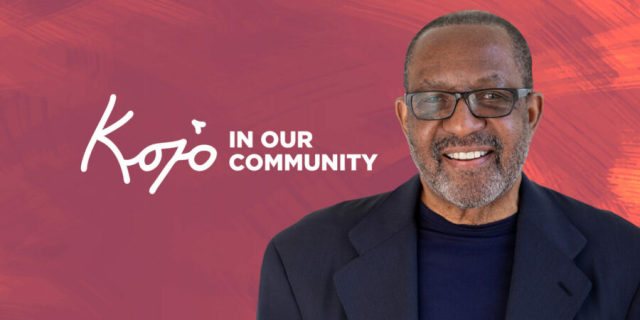
Amid a regional housing shortage and rising rents, Montgomery County is grappling with a complex issue: How to create more housing.
Officials have proposed ideas like building more housing, including designated affordable units, near Metro stations. And they are considering allowing single-family neighborhoods to be rezoned to allow different housing types, like duplexes and triplexes. Many of these proposals are included in the new general plan, Thrive Montgomery 2050.
But the plan and its proposals have drawn both praise as well as vocal opposition. Residents, including many homeowners, are concerned that measures to increase housing density could change the character of neighborhoods, cause environmental damage, and increase traffic. On the other hand, some worry that the plan doesn’t do enough to address affordable housing and racial equity.
In this hour, Kojo Nnamdi talked with local officials, advocates, and residents about housing in Montgomery County, and the path forward.
By Kojo Nnamdi | Listen to WAMU 88.5 at 1 p.m., or stream afterwards


Women across America are significantly less likely to experience homelessness than men, a disparity that is particularly high in D.C., where rates of homelessness are roughly three times higher among men than women, according to data from the Homelessness Research Institute.
Being outnumbered by their male counterparts means unhoused women face particular challenges, including disproportionately experiencing sexual assault and struggling to access services that cater to their specific needs, such as housing and health care. Women’s shelters in the District often run out of beds and lack adequate security, leaving women vulnerable to attacks and the many other perils of sleeping outdoors.
Gaspard Le Dem | Read the full story


Imagine being 17 years old without a parent or guardian or a permanent place to call home when housing costs are soaring, and high inflation is driving up the cost of food and other necessities. When well-educated, financially stable Washingtonians are tightening their financial belts because of the uncertainty, it is a frightening time to be trying to figure things out on the District’s streets.
There are more than 1,300 youth experiencing homelessness in the District. And young people of color and those identifying as LGBTQ+ are disproportionately represented.
By Rachel White | Read the full story

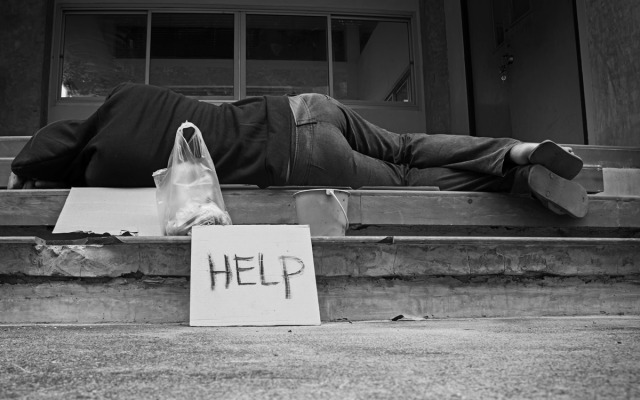
The Wanda Alston Foundation states on its website that it made history in 2008 when it opened D.C.’s first transitional housing program solely dedicated to LGBTQ+ youth ages 18 to 24 experiencing homelessness.
As part of that program, the foundation, named after the late and beloved LGBTQ rights advocate Wanda Alston, has since opened two more LGBTQ youth homeless facilities, including one that opened last year that also made history.
Referred to as Renita’s, it’s a two-bed, two-year transitional housing program believed to be the first known such facility focused specifically on serving homeless transgender men of color.
By Lou Chibbaro Jr | Read the full story


Amilcar Benitez’s home, as well as his neighborhood in Harmony Place, has gone through immense transition in the past year. Last fall, the owners of the mobile home park along Richmond Highway (Route 1) in Fairfax County were looking to sell and pursued an offer from a real-estate investment company. Benitez and other Harmony Place residents quickly worked with the county and an Alexandria-based community organizer to create a counterproposal. If accepted, a local nonprofit would own and manage the park, backed by county financing — a model the county now regards as a template for future ownership proposals. But in December, the park owners closed on the deal with the investor, Six Rock Properties, for $1.5 million less than the proposal arranged by tenants.
“I personally tell him, ‘Look, you’re trying to take our opportunity,’” Benitez recalls. “You have a lot of money. And this is a low-income community.”
By Eliza Tebo | Read the full story


In 1982, Stepping Stones Shelter made history as the first homeless shelter for families in Montgomery County, MD. Today, it’s best known for its location in Rockville’s historic Dawson Farmhouse and for providing about 30 families with housing and services each year.
Stepping Stones houses families of all shapes and sizes; two-parent families, single parents, multigenerational households and anyone with custody of a minor. The shelter’s Hope Housing Program also provides permanent supportive housing for two families with disabled heads of household. Stacey Gold, Stepping Stones’ executive director, has navigated five years of growth and change at the shelter. Street Sense Media spoke with Gold about carrying on the shelter’s legacy.
By Sophia Thomas | Read the full story


The first days of D.C. fall were gray and gusty this year, with temperatures that slipped into the 40s and rain that wavered between a drizzle and a downpour for days. The remnants of Hurricane Ian, whose forces devastated parts of North Carolina, Florida, and Cuba, dumped two inches of rainfall in the first five days of the month – already more than half of the monthly average for October, according to the National Weather Service.
While some D.C. residents mourned the loss of canceled weekend plans, Michael Allen, a 69-year-old Tennessee native who has lived outside of Union Station for the past five years, was hoping that his tarp would keep him dry in spite of its many holes.
By Colleen Grablick | Read the full story


If you don’t know to look for it, Friendship Place is easy to miss. From the outside it could be mistaken for any other house, dwarfed by the commercial buildings beside it on Wisconsin Avenue in Tenleytown. But for those who seek it out, Friendship Place, a nonprofit that provides services to people experiencing homelessness, can be life-saving.
Friendship Place first opened in Tenleytown 30 years ago as a community-led effort to support homeless people in the wealthiest part of Washington.
By Gabe Castro-Root | Read the full story


Image: Backyard cottage Accessory Dwelling Unit, Winchester, VA. BeyondDC // Flickr
Eden Village is a complex of tiny homes that has helped mitigate homelessness in Missouri. But could it work in D.C.?
As part of the 2022 Homeless Crisis Reporting Project, City Cast DC was joined by Street Sense reporter Hannah Loder to see if the District could adopt something similar.
By Bridget Todd | Listen to the full podcast

Reporting

Nearly 40 years ago, Shepherd’s Table was just a tiny soup kitchen in the back of a church in Silver Spring, Md. Today, it’s a fully functioning facility, serving over 500 nutritious meals a day and offering essential goods and services to every individual that passes through its doors. Manny Hidalgo is the executive director at Shepherd’s Table. Street Sense Media spoke with him about the organization’s services, the people it serves, and how it was affected by the pandemic.
By Sophia Thomas | Read the full story

2022 Reporting

As the pandemic waned, Vivian Tatabod, a nurse in Prince George’s County, says she noticed many of her neighbors in her apartment building getting evicted.
“When people were going through so much,” she says. “Stuff outside, thrown out, families, struggling to find a place.”
Rent in her building, Takoma Towers, recently shot up — in Tatabod’s case, by $400 per month. She says she’s paid her rent while working on the front lines, treating elderly COVID-19 patients. Recently, she was contracted to work at DC Prep to help with COVID-19 testing. While working, she was also raising two children on her own.
But two months ago, that contract ended and she lost her job. Now, she too is facing eviction.
By Sarah Y. Kim | Read the full story

2021 Reporting

It was 2018 when the Rev. Wendy Hamilton, a 2022 candidate for DC delegate to the U.S. House of Representatives, first learned about universal basic income (UBI). Hamilton, who has lived in DC since the late ‘80s but grew up in a small industrial town in Ohio, was reading a New York Times article that featured Andrew Yang, a presidential candidate for the 2020 Democratic primary who campaigned on UBI.
But proponents hope now is the time to rally support locally. In late September, Hamilton marched alongside approximately 50 residents and activists — including organizers of the DC UBI Coalition — to press Mayor Muriel Bowser to join a group of mayors across the country who have committed to supporting guaranteed income programs. Mayors in surrounding jurisdictions such as Alexandria, College Park and Takoma Park have publicly declared their support for such initiatives. The idea has also won the backing of mayors in St. Paul, Minneapolis, Denver, and Los Angeles, among many others.
By Will Schick | Read the full story


On Monday, a bulldozer at a NoMA encampment clearing picked up a man who was still inside a tent, reminding housed residents about the unsafe conditions unhoused folks face. As City Paper reported, the incident heightened concerns about how Mayor Muriel Bowser and District officials are running homeless encampment clearings throughout the District. On the heels of the event, City Paper took a look at how District residents who have experienced homelessness own their stories of struggle and empowerment. One such story is chronicled in the upcoming D.C.-based documentary Street Reporter, slated to screen in the District later this month. Co-starring Street Sense Media photojournalist Sheila White and SSM reporter Reggie Black, the doc follows White beginning in 2019, as she returns to school in her late 50s and pursues her journalism dreams while staying at a women’s shelter.
By Ambar Castillo | Read the full story


In 2018, and again in 2021, D.C. Housing Authority Chairman of the Board of Commissioners Neil O. Albert approved contracts totaling millions of dollars for a female companion whose architecture and design firm has failed to deliver on the first contract and is under-qualified for the second.
In neither case did the CEO of Moya Design, Paola Moya, disclose her personal relationship with Albert; nor did Albert disclose his personal relationship with Moya—even as he approved both awards in writing.
Observers say that Albert is allowing the city to take over DCHA’s public housing portfolio and spin it off to Bowser’s friends in the developer community so they can build mixed-use projects with so-called “affordable housing” units that are beyond the reach of residents who earn between zero and 30 percent of Area Median Income, known as “AMI.”
By Jeffrey Anderson | Read the full story


This one-day news “blitz” was organized more than a month in advance and centers around enterprise stories that highlight solutions, connect to people with lived expertise facing homelessness, and investigating persistent problems.
A core tenant of our collaboration is that we avoid duplicating each other’s story assignments to ensure we cover as many different aspects of poverty as possible.
However, outside of this project, unexpected events this week drove many local media outlet’s attention and underscored that homelessness is a crisis in our community.
Approximately 60 people were evicted from two underpasses near Union Station. While the stated goal of the closure was to make the sidewalks more accessible for pedestrians, concrete barriers were placed where the tents had been, making the space usable by no one. In one case, city workers picked up a tent with a front loader to dispose of it and a person was still inside. The person was pushed into a metal guard rail and taken away in an ambulance but reportedly returned to the area that night and was not injured. Whether they had been able to move in yet or not, only half of those displaced from the encampments had been connected to housing at the time of the closure. Some of those who did not receive housing moved to another encampment — a park at New Jersey Ave. and O St. NW — that is scheduled to be closed next month. And that night, a resident of the NJ and O encampment, which sits next to a fire station, died in a tent fire.
Here are stories produced by our partners:
Street Sense Media: DC government removes tents, injures one resident, houses others, and deploys concrete barriers to enforce a ‘pedestrian passageway’
Street Sense Media: DC is moving some encampment residents into housing. What about those not “on the list?”
DCist/WAMU: D.C. Suspends Clearing Of NoMa Encampments After Unhoused Person Hit By Bulldozer Driver
DCist/WAMU: Fire At D.C. Homeless Encampment Leaves One Person Dead
Axios DC: D.C. pauses homeless encampment clearing
Axios DC: No-tent zone resistance grows as city moves forward
Washington City Paper: Unhoused Man Picked Up By Bulldozer During Encampment Clearing
Greater Greater Washington: COMMENTARY: DC needs to get our house in order before we order people out of theirs
Georgetown Voice: D.C.’s new approach to public spaces leaves out encampment residents
GW Hatchet: D.C. officials pilot program to shut down E Street homeless encampment

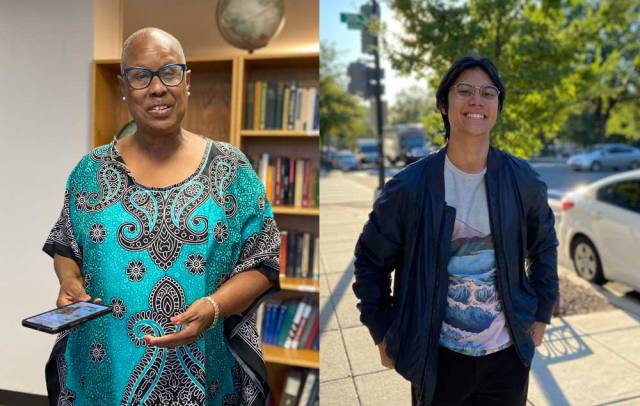
Each Friday, Yannik Omictin accompanies a group of community service volunteers and activists for a tour around Foggy Bottom to ask after the needs of the unsheltered residents living in the area. Omictin says that other elected members of ANC 2A join in on the evening treks with People for Fairness Coalition and Ward 2 Mutual Aid.
He and Evelyn Hudson, another commissioner on ANC 2A and a regular attendee of the weekly walks, are concerned with how the city plans to manage the new pilot program that connects unsheltered residents with housing vouchers while simultaneously evicting them.
By Will Schick | Read the full story


As the D.C. courts gear up for a flood of eviction proceedings, many homeless and housing-insecure District residents continue to make last-ditch appeals to landlords, case workers and housing advocates to prevent their precarious conditions from worsening.
For one District resident, each new day brings uncertainty about whether she will remain in a District rapid rehousing program that, for six years, has allowed her to stay in increasingly expensive apartments at well below the market rate.
Thousands of District residents facing eviction have applied to STAY DC, a financial assistance program that covers rent and utility costs. However, the program has been mired in controversy for what’s been described as a convoluted application process.
Over the last few weeks, D.C. Council Chairperson Phil Mendelson (D) and D.C. Mayor Muriel Bowser (D) repeatedly clashed about the program.
By Sam P.K. Collins | Read the full story


Launched more than 18 months ago, the program places unhoused residents most at-risk of falling seriously ill if they contract COVID-19 into hotels leased out by the city’s Department of Human Services — an effort to prevent the transmission of coronavirus in the city’s congregate shelters.
Unlike the shelters, or a previous shelter-hotel housing service where residents reported poor conditions and abuse by contractors, providers and residents have reported markedly better results with PEP-V’s model. Residents have access to on-site medical care, in addition to their own bathroom and a quiet place to sleep.
PEP-V has been extended through the remainder of 2021, thanks to an extension of government funding, but its future beyond is unclear. City officials have previously said they wouldn’t extend the program after federal dollars run out.
By Colleen Grablick | Read the full story


As extreme weather persists and increases nationally, floods, excessive heat and poor air quality in the District disproportionately harm those living outside, people of color and people living east of the Anacostia River.
Living outside or in poor housing conditions increases the risk of exposure to pests, insects, mold and extreme heat, all of which can accelerate health issues like asthma, according to Neil Boyer, who chairs NAACP DC’s Environmental and Climate Justice Committee. Health issues caused by poor living conditions also disproportionately affect Black residents in wards 5, 7 and 8, Boyer said.
“These are the kinds of things we need to look at when we’re linking climate change and illness — in an environmental justice perspective,” he explained.
By Kaela Roeder | Read the full story


There are thousands of unhoused people in Washington, D.C. There are also thousands of vacant apartments. For the founders of Vacant to Virus-Reduction (V2VR) the solution seems obvious: offer them the housing.
In spring of 2020, V2VR outlined a plan in which the D.C. government invests in the D.C. community by directly matching unhoused people with vacant, taxpayer trust fund-financed housing. Under current policy, the city allows these properties to remain vacant.
When V2VR was launched last year, there were 9,826 vacant units in D.C, according to an official count done by Costar Group. As of July 2021, that number had increased to 17,614.
By Margaret Hartigan and Deena Eichhorn | Read the full article


Mere hours after workers finished laying sod on the last Friday of September, elected officials, government staff, and D.C. residents attended a reopening ceremony for Franklin Park.
Bowser’s remarks were interrupted by Chandra Brown, an unhoused woman, who sat in the front row next to the VIP guests. While the mayor was speaking, Brown’s demeanor changed and she began to yell. The interjection did not appear to be a reaction to any specific comment.
“Black Lives Matter [is] going to Hell!” yelled Brown. She commented on her struggle to get help for housing, healthcare, and freedom from police harassment, but after a few sentences, she was whisked out of her seat by a woman who identified herself as a fellow D.C. resident.
By Gordon Chaffin | Read the full story


Skyler Kelley, 27, began hosting Wine-Down Jazz Nights a year ago as a way to support people like her: single mothers who’ve experienced or are experiencing homelessness in D.C. Kelley often asks ticket holders to bring donations for gift cards to the supermarket Aldi and supplies like diapers and wipes to hand out to mothers in need. But the jazz nights are just a prequel to a set of grander ambitions, including her goal of becoming a “social entrepreneur,” running her own nonprofit and coffee shop, and of inspiring other women to follow in her footsteps.
When she’s not serving up coffee as a barista at Peregrine Espresso in Union Market, the Germantown, Md. resident is fundraising for the future Brij Coffeehouse & Juicebar, a coffee shop of her own she plans to open in Northeast D.C., if things go her way.
By Elliot C. Williams | Read the full story


Certainly, the square footage dedicated to fresh produce at Chesapeake Big Market is minimal compared to the volume of space in the front of the store occupied by alcohol and tobacco products. But by offering any amount of fresh fruit and vegetables at all as a participant in DC Central Kitchen’s Healthy Corners program, the market serves an essential role in bringing healthy food to Washington Highlands, which lacks a big-name, full-service grocery store.
“A lot of families come down here in the morning, they buy fruits for the kids when they go to school, so they don’t have to travel far away just for the fruits,“ says Kassaye. “When they can just get it right in the neighborhood, you know, that’s just going to eliminate [needing to] travel far away just to get fruit.”
By Bridget Reed Morawski | Read the full story


DC plans to evict the residents of the Shaw park encampment next month, so Deputy Mayor for Health and Human Services (DMHHS) Wayne Turnage and pilot program lead Jamal Weldon attended ANC 6E’s meeting earlier this week to provide an update on the plans for the park and what will be done to avoid repeating the mistakes made earlier in the week.
The tentative eviction date is November 4th, although the Department of Parks and Recreation (DPR) intends to give 30 days’ notice ahead of time and had not yet done so as of the Tuesday ANC meeting. Weldon noted that among the changes DMHHS is making to keep encampment residents safe in the future are to have a tighter police perimeter around sites while evictions are taking place and to do more tent checks.
By Nena Perry-Brown | Read the full article


After spending the day working with elementary and middle school students as an art teacher at a local public school, Kyle Scadlock spends most Fridays walking around Foggy Bottom, handing out supplies to individuals experiencing homelessness.
He said helping unhoused neighbors has been a focus of his since moving to D.C. last July. “It’s about supporting our community and especially people that don’t have basic human rights, like shelter, water, food as a result of failed government and failed policy,” Scadlock said.
Scadlock is one of more than a dozen volunteers who participate in weekly outreach to homeless residents in Foggy Bottom on behalf of Ward 2 Mutual Aid, an organization that works to support community members in vulnerable situations, like homelessness or unemployment.
By Zachary Blackburn | Read the full story


Homelessness advocates say that even before the pandemic, D.C. resources for housing programs weren’t able to keep pace — especially with those experiencing chronic homelessness. They say the tax increase can make a dent; it’s expected to fund 2,400 additional housing vouchers over the next year alone, a four-fold increase over recent years, according to an analysis by the liberal-leaning D.C. Fiscal Policy Institute.
“For people who are concerned about encampments and folks who are experiencing homelessness, this is probably one of the most important things we’ve ever done to end it,” says Councilmember Brianne Nadeau (D-Ward 1), one of the authors of the tax increase.
According to a breakdown from Nadeau’s office, almost half of the 2,400 units funded by the revenue from the tax increase will be directed to Permanent Supportive Housing for individuals, which advocates say will address some of the hardest-to-help people experiencing homelessness.
By Martin Austermuhle | Read the full story

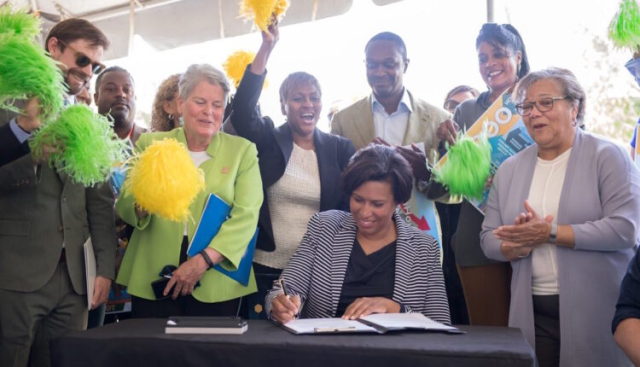
Ask that question of most DC tenants and the answer is sure to be a resounding no — although last week Mayor Muriel Bowser kicked off her annual feast for developers to entice more affordable housing projects. Using federal and local tax dollars, and with the approval of the DC Council, her administration could spend as much as $400 million from the city’s Housing Production Trust Fund (HPTF) to construct and preserve affordable housing.
Despite that historic investment, few believe the money ultimately will help those who are at the extremely low-income level. “It’s a game; it’s almost a scam,” said Robert Leardo, co-chair of TENAC, a citywide tenant advocacy organization that has been at the forefront of affordable housing issues in DC for more than two decades.
By jonetta rose barras | Read the full column


Housing affordability and homelessness have a direct link. Nan Roman, CEO of the National Alliance to End Homelessness, told CityLab in 2020 that while mental illness and substance disorders existed before, the major societal change that coincided with widespread modern homelessness was a rise in the cost of housing.
Research bears out that link. A 2018 Zillow study found that areas where people spend more than a third of their income on rent experience more rapid increases in homelessness.
By Libby Solomon | Read the full analysis


Hostile architecture blocks unhoused people from sleeping and using bathrooms, among other necessities, throughout the Georgetown neighborhood.
Examples of hostile architecture include park benches with partitions that make it impossible for someone to lie down and sleep or metal spikes on a heating grate that prevent people from sitting or lying on it to warm themselves. In an effort to contribute to existing documentation of hostile architecture throughout Washington, D.C., The Hoya identified multiple instances of anti-homeless design in the Georgetown neighborhood.
By Paige Kupas | Read the full story


There are roughly 1,200 unhoused residents in Fairfax County, according to the county’s January 2021 point-in-time count. The total number fluctuates significantly over time, as people enter and leave the county and the seasons change.
Getting COVID-19 vaccines to this transient — and highly vulnerable — population is a major challenge for public health staff.
The job can be especially hard in the suburbs. Fairfax County is big, and there’s a lot of variety in where people experiencing homelessness in the suburbs live — shelters, encampments, parks, parking lots, sometimes even deep in the woods. Public health workers doing outreach in the suburbs have to range over a large area, and they have to know where to look.
By Margaret Barthel | Read the full story


A la hora del desayuno, almuerzo o la cena, en Shepherd’s Table nadie presta atención a la línea imaginaria que separa a DC de Silver Spring, Maryland. “Con la pandemia hemos visto a más latinos que vienen desde DC y no les negamos un plato de comida, un abrigo o un examen de los ojos”, dice Evert Vargas, director de servicios sociales de esa organización.
Puesto a enumerar los problemas de los latinos sin techo, Vargas enlista a la falta del idioma en segundo lugar. “Siempre hay alguien que les auxilia con el español, pero lo que más les afecta, les aterra y los cohíbe de buscar ayuda es su estatus migratorio. Viven en constante miedo de ser deportados”.
Por Olga Imbaquingo | Lee el artículo completo


The DC Line and Street Sense Media talked to various homeless service providers and with homeless and formerly homeless people who have navigated this system to ask how to secure permanent housing.
The resulting guide is specific to the resources available to single individuals. The resources available for families differ significantly.
By Will Schick | Read the full story


There’s a new push to give more rights to unhoused people in D.C.
Driving the news: Lawyers, housing advocates, and people experiencing homelessness are getting behind another D.C Council bill that would formally make homelessness a protected class.
Why it matters: The legislative effort comes as D.C. is experiencing a surge in unsheltered people where just this week efforts to clear a tent encampment were paused after a bulldozer injured an unhoused resident in a tent.
By Chelsea Cirruzzo | Read the full story


The Stones House is not like your typical church — it proudly calls itself “the church for the hood.” On a street corner in Southeast, services start with performances from live DJs, groceries are distributed to the community, and hip-hop and go-go music are incorporated into worship.
The Stones House asserts that it is “Where the Stones Live that The Builders Rejected” and welcomes those who may be excluded from other church services, including people with substance abuse disorders or those impacted by the justice system. And the space provides much-needed community outreach, as D.C. launches policing initiatives to be “tougher on crime,” and makes parole and clemency more difficult for those who are incarcerated in the district.
730DC learned more about the community service organization and faith community from Pastor Curtis Thomas III, who co-founded the church.
By Sahar Roodehchi | Read the full interview


Casa Ruby is being forced to slash key services, including its low-barrier shelter, after the Washington, D.C. Department of Human Services (DHS) pulled an $850,000 funding grant that sustained its operations. Because the DHS canceled funding, Casa Ruby can no longer offer overnight stays at the Georgia Avenue shelter nor maintain 24-hour drop-in services for those seeking services. Following the Sept. 24 DHS announcement, Ruby Corado, the shelter’s founder, resigned from her role as executive director.
By Paige Kupas | Read the full story

2020 Reporting
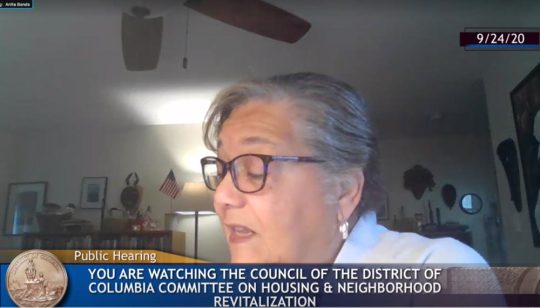
Last month, The D.C. Council Committee on Housing and Neighborhood Revitalization held the first of several planned hearings to discuss five proposed bills to close loopholes in local rent control.
The District’s rent control law is based on the Rental Housing Act of 1985 and applies to all housing accommodations, however there are exemptions.
Many testified that the law is insufficient to protect renters from facing homelessness or being priced out of the city. And a number of the public witnesses turned out to specifically support separate, more-robust legislation that is expected to receive a hearing in November.
By Aoife Maher-Ryan | Read the full story


Robert Turner used to use the bathroom at Starbucks locations and public libraries in the heart of D.C. But when the COVID-19 pandemic hit, Turner, who is 41 and has lived on the street for five years, was shut out of his usual spots.
“It’s been harder, and you ain’t got no resources during this,” he said while standing outside of Union Station on a recent day, holding his tent in one hand and his sleeping bag in the other. Turner sleeps in different places around the city on different days. He pitches his tent in parks, near office buildings, and outside Metro stations.
For Washingtonians experiencing homelessness like him, the pandemic has made it even more difficult than normal to find public restrooms and places to wash oneself — at the very moment these residents need them most.
By Kelly Anderson | Read the full story


A guaranteed income is a monthly cash payment made directly to any citizen who qualifies with no strings attached. Though it is similar in concept to a universal basic income, it is normally targeted to low-income residents, rather than all residents.
Since June, 25 mayors from across the country have united to call for a guaranteed income at the federal level and have begun studying programs in their cities through Mayors for a Guaranteed Income (MGI). Following the success of Stockton, California’s guaranteed income program, its mayor, Michael Tubbs, founded the organization and began recruiting fellow mayors to support similar models.
Washington D.C. Mayor Muriel Bowser has not signed on and her office did not respond to requests to comment.
By Annemarie Cuccia | Read the full story


A look back at some of the local media’s articles, columns and commentaries from the past year that stand out on the subject.
By Chris Kain | Read the full article


Over the course of the two-month campaign, Pathways to Housing D.C. registered 115 people who currently or previously experienced homelessness to vote.
Pathways staff and volunteers addressed an almost foundational question: how can you register to vote if you don’t have an address to call your own, even more so during an election D.C. is hoping to conduct largely by mail?
They worked to identify mailing addresses for people who might have access to them, and when one wasn’t readily available, used the address of either the Pathways office or the Downtown Day Services Center. That way, people without homes of their own could still get their ballots in the mail.
By Martin Austermuhle | Read the full story

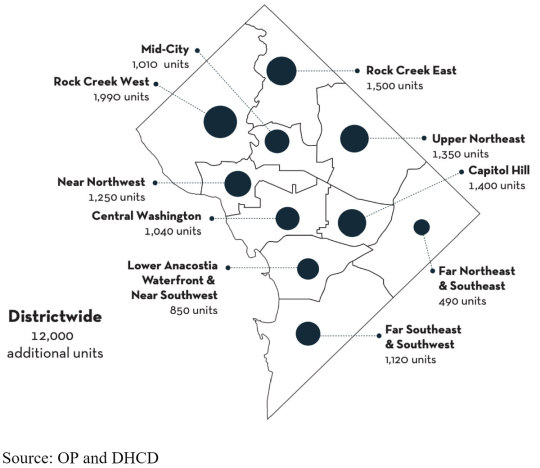
At the beginning of the year, DC’s Office of Planning (OP) filed a zoning application seeking to increase inclusionary zoning (IZ) requirements in an effort to achieve more affordable housing production citywide.
The Zoning Commission is gearing up for another hearing on the topic next month.
Approval of expanded inclusionary zoning would amend the zoning code to require that mixed-use and residential projects that used a map amendment to add density or change the site’s use from non-residential to residential provide 10 to 20% of the residential gross floor area (GFA) as inclusionary zoning, up from the current requirement of 8 to 10%.
By Nena Perry-Brown | Read the full story


Denis Gallegos was two months behind on rent when he came home to find his locks had been changed.
…
Lawyers who represent low-income renters in the D.C. area say they’re encountering more stories like this as the pandemic lurches into its seventh month.
The reason, they say, is the extreme economic uncertainty wrought by the crisis, combined with waning government assistance. The region’s jobless rate was close to 7% in August, unemployment benefits are running out, and as many as 715,000 renters in D.C., Maryland and Virginia are now at risk of eviction, according to the Aspen Institute.
By Ally Schweitzer | Read the full story


The federal government describes food insecurity as “a lack of consistent access to enough food for an active healthy life.” It is not to be confused with hunger, which “refers to a personal, physical sensation of discomfort.”
Help us.
Euphemisms like food insecurity, food deserts and housing insecurity rile me. They misdirect the public’s attention from critical problems in society — problems that with more competent government managers and a galvanized citizenry could be substantially mitigated, if not solved.
By jonetta rose barras | Read the full column


More than 100 women experiencing homelessness were cast out of the Harriet Tubman Women’s Shelter during a Sept. 22 deep clean of the building. While out on the lawn, some told stories of verbal abuse from staff and guards. They say the rules and conditions are pushing them to their breaking point.
By Athiyah Azeem | Read the full story


Over the last few months, some Adams Morgan business owners and residents have pushed for a more aggressive effort to police Unity Park of alleged illegal activity, including drug use, drug sales, drinking, and public urination/defecation. The triangle park, formed by Champlain, Euclid, and Columbia Rd NW, is a popular gathering place for residents, some of whom may be experiencing homelessness. While there may be illegal activity happening at Unity Park, experts Street Justice spoke to say that reactive policing will not solve the multifaceted challenges of Washingtonians who have gathered at Unity Park for decades.
By Gordon Chaffin | Read the full story


Nery Peña and her two daughters, Sadie and Ariella, 6, live in transitional housing provided by Turning Point Center, a two-year housing program for single mothers experiencing homelessness or at risk of becoming homeless. Prior to coming to Turning Point a year and a half ago, Peña was living with her grandmother in a cramped one-bedroom. Now, the bilingual Pre-K teacher has a two-bedroom apartment in Columbia Heights to share with her daughters.
But as the pandemic hit D.C. in March, Turning Point began restricting visitors within the apartment building, not even allowing neighbors in each other’s units. For a time, Peña and her daughters stayed with Peña’s mother on U Street, where they had more space and the girls could interact with Peña’s siblings.
By Chelsea Cirruzzo | Read the full story


Amid the economic, health and educational uncertainties caused by the coronavirus, an equally virulent pandemic co-exists: the increased instances of intimate partner violence.
On average, nearly 20 people per minute are physically abused by an intimate partner or parent in the United States. In a single year, this equates to more than 10 million women, men, and children. Additionally, 1 in 4 women and 1 in 9 men experience severe intimate partner physical violence, sexual violence, or intimate stalking.
And with schools, businesses, and many outreach services shuttered under COVID-19 mandates, the sudden spike in homelessness among survivors of domestic and intimate partner violence has pushed outreach agencies into new territory.
By
Lindiwe Vilakazi | Read the full story


Rapid rehousing is one of D.C.’s most controversial homeless services programs. This election season, at-large candidates Marcus Goodwin, Will Merrifield, and Mónica Palacio have included reform of the program, or investment in it, as part of their campaigns.
By Lilah Burke | Read the full story


For a day, we walked from Northeast to downtown to speak to people experiencing homelessness. We asked them how the pandemic has altered their lives and what they want people to know ahead of the winter months. Here’s what they shared, in their own words.
By By Jenny Gathright, Elliot C. Williams, and Tyrone Turner | Read the full story

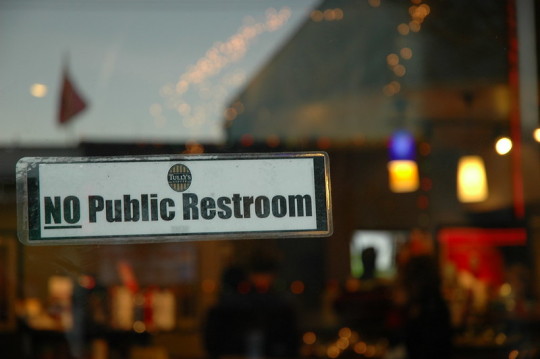
Imagine you’re downtown and you need to use the restroom. Maybe you’re pregnant, diabetic or a runner. Maybe you’re experiencing homelessness and don’t have bathroom of your own. Whoever you are, you don’t have many options.
At noon, we discuss some of the proposed solutions to the lack of public restrooms in the District, and one city-sponsored bathroom-building strategy underway right now.
Produced by Lauren Markoe | Listen here

(Call in at 1-800-433-8850, write to [email protected], or Tweet @kojoshow)

“It’s like being naked, walking around in the streets,” said 41-year-old Marcellus Phillips. “You don’t have anything. It’s hard to have hope. It’s hard to have motivation when you know that you don’t have your name on the lease and you can’t have your own key and go in your own door. You walk around. You watch people do stuff that you want to do, but you can’t because of your circumstances.”
…
Going forward, Phillips wants to help other homeless people experience the success he has found.
“Everybody’s story is different, but people tend to look at the homeless and think that automatically they must be on drugs or they must have done this or that,” he said.
By Michael O’Connell | Read the full story


A Street Sense Media analysis determined that only six of the 24 at-large DC Council candidates on the ballot advertised specific plans with measurable goals to address homelessness in their online platforms. We sent them five questions about local poverty.
By Jake Maher | Read the full voter guide


At the beginning of the pandemic, the District enacted an emergency order that put a halt to evictions. However, according to a report from Georgetown University, some landlords are using eviction notices to pressure tenants to pay rent. The report finds that once a tenant is given an eviction notice, a cycle of eviction and housing instability ensues.
And many fear that without any federal relief, the entire region may enter a housing crisis once the moratorium is lifted. Some experts believe that this crisis has already begun in the District.
Produced by Richard Cunningham | Listen here

Call in at 1-800-433-8850, write to [email protected], or Tweet @kojoshow.

When an eviction action is filed, that filing remains on a tenant’s record permanently, whether or not the action was successful. This record can inhibit a tenant’s ability to secure affordable housing in the future, even if the eviction action was denied or found to be unwarranted, or, as is currently the case, filed illegally during the moratorium.
The D.C. Council unanimously passed a bill on Oct. 6 mandating eviction records be sealed after as little as 30 days if the eviction was not carried out and after three years if it was — allowing the courts to seal records sooner at their discretion. The legislation was introduced by Ward 3 Councilmember Mary Cheh and Council Chair Phil Mendelson.
By Annemarie Cuccia | Read the full story

Reporting
For the sixth consecutive year, we are pooling our resources and audiences to assess our community’s homelessness crisis. We coordinate coverage to avoid duplication of efforts and broaden the range and depth of our combined body of work.
This collection will be released throughout the day on October 7, 2021, the first week D.C. Council is back in session and just before World Homeless Day that weekend. By doing so, we aim to provide a more comprehensive understanding in our fragmented media landscape. Links to all stories will be added here as they are published.
The many complex factors that keep more than half a million Americans and at least 5,111 Washingtonians living in a state of emergency demand rigorous and sustained reporting from our newsrooms.
<!–
–>
2019 Reporting
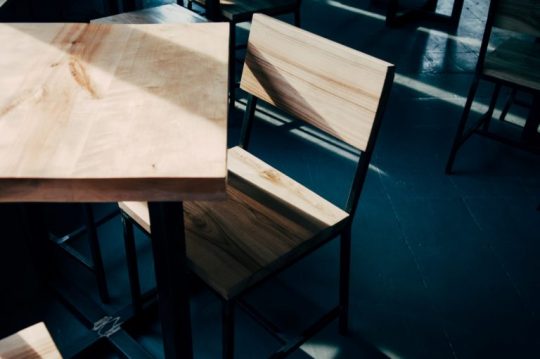
When second-grader Relisha Rudd went missing in 2014, the first person to notice was a social worker at Payne Elementary School who works as a homeless liaison.
In addition to highlighting the decrepit and dangerous conditions at D.C. General, the former hospital-turned-family-shelter where Rudd lived, the tragedy of her disappearance also shone a spotlight on the role of homeless liaisons in D.C. Public Schools. These liaisons act as a point person at schools, coordinating between families, the school district, and agencies throughout the city.
Students experiencing homelessness face a unique set of challenges on a day-to-day basis. “They see much higher rates of attendance difficulty. They see higher rates of chronic absenteeism. And they see poorer student outcomes,” Deputy Mayor of Education Paul Kihn tells DCist. Basics like clean clothes and transportation can be difficult when your first priority is determining where you’ll sleep that night.
By Jonquilyn Hill | Read the full article


On Jan. 23, the District conducted its annual Point-In-Time (PIT) count, a survey conducted nationwide to give a “snapshot” of residents experiencing homelessness on a single night. According to the Metropolitan Washington Council of Governments’s analysis of that data, 489 of the 6,521 people experiencing homelessness in D.C. were “transition-age youth,” young adults age 18-24.
However, the D.C. Homeless Youth Census, a separate annual count of local homeless youth that was conducted only four months prior, found there were 1,328 transition-age youth experiencing homelessness in the District. Other than a small window of time, what separated these surveys was the time taken to complete them and the criteria used to determine who was counted as homeless and who was not.
By Gabrielle Wanneh | Read the full article


It’s been almost a year since the city closed down D.C. General, a dilapidated former hospital being used as a family homeless shelter.
Bowser laid out a plan for closing the facility in 2016 that involved building a series of six new, smaller family shelters that would be staffed by non-profit agencies serving as contractors for the city. The D.C. Council reconfigured the original plan to ensure that all the sites were on city-owned land, rather than leased from developers. Administration officials said at the time that it would push the timeline for completion to the end of 2019.
But even as construction on those shelters lagged further due to neighborhood opposition and other problems, Bowser’s timeline remained firm: she planned to close the shelter in fall 2018, and close it she did. Her administration even started deconstruction and demolition of parts of the shelter while families were still living there, which advocates protested.
A year later, here’s where all the planned shelters stand:
By Natalie Delgadillo | Read the full article


As the Adams Morgan neighborhood in Northwest D.C. has continued to gain new development and lose diversity, a number of service organizations have established themselves in the area to serve low-income residents and mitigate the effects of gentrification. Despite their presence, many families lack the resources to find what services are available. Recognizing this disconnect, five local organizations joined together to promote economic stability and social mobility.
Their initiative, dubbed Platform of Hope, launched in 2018 and specializes in helping families navigate the web of service providers in the D.C. area. The program is nine months into its pilot phase and plans to begin working with its second cohort of families in September.
By Maia Brown | Read the full article


Some residents west of Rock Creek Park have similarly objected to large-scale development projects in their neighborhoods, yet many residents in the eastern part of the city don’t want affordable units to be built exclusively in their neighborhoods.
Bowser will have to navigate this dichotomy as her administration hones its plans to build 36,000 new housing units by 2025 — including 12,000 set aside to be affordable — to accommodate the District’s growing population. In May, Bowser called for an “equitable distribution” of these new affordable units, noting the lack of affordable options west of Rock Creek Park.
“The mayor took this approach — and I actually give her a lot of credit for it — with the family homeless shelters that were put in all eight wards of the city,” said Patrick Kennedy.
By James Marshall | Read the full article


In January 2017, the local nonprofit SMYAL (Supporting and Mentoring Youth Advocates and Leaders) launched its signature youth house, a 2-year, 12-bed transitional living program for homeless LGBTQ+ youth in the D. C. metropolitan area. SMYAL had already been providing services in education, health, and advocacy work since 1984, but wanted to expand their reach to offer a tangible housing solution.
Since then, seven people have graduated from the housing program and moved on to sustainable independence, and the organization is looking forward to extending that opportunity to more youth once the new house opens its doors.
This July, the organization received a contract to create a second house, which is set to open its doors before the summer ends.
By Gabrielle Wanneh | Read the full article


It isn’t just the way homelessness organizations in the District serve meals that make them special: The journey of all the ingredients that go into the dishes is unique, too, often starting with recovering food that would otherwise be wasted.
According to the Food and Agriculture Organization of the United Nations, about one-third of all food in the world goes uneaten. And in the District, about one in nine families will experience food insecurity.
The path connecting D.C.’s would-be-wasted food to shelters and other organizations is often complex, multi-sourced—and sometimes even underground.
By Chelsea Cirruzzo | Read the full article


The five years of work encompassed by the “Homeward D.C.” strategic plan Mayor Bowser commissioned to make homelessness in the District “rare, brief and non-recurring” in the District are coming to a close. The D.C. Interagency Council on Homelessness is now working to develop a second phase of the plan.
One working group is focusing on the need to expand the dialogue on racial equity, which was not explicitly considered in the initial Homeward D.C. plan. Along with training, education, and public awareness, the group called for policy-oriented initiatives to combat NIMBYism and laws that have adverse impacts on communities of color and low-income residents.
By Brianna Bilter | Read the full article


Earlier this year, Mayor Muriel Bowser snatched money from the city’s contingency reserve fund. By June 30, the account was down from $279.7 million to $194.7 million, according to a report released by the Office of the Chief Financial Officer.
The mayor spent $13.6 million for the Kids Ride Free program; its budget has ballooned from $9.4 million to $22.9 million in fiscal year 2019. She paid $1.7 million for a summer youth program in wards 7 and 8 and $5.2 million to complete demolition of DC General Hospital, which had served as a shelter for homeless families. Bowser took another $94.3 million for an advance to charter schools. In some instances, the money has already been repaid as a result of the approval of a revised 2019 budget and the submission of the 2020 budget to Congress, said a CFO spokesperson, adding the rest will be returned to the contingency fund from the expected surplus for fiscal year 2019.
Most curious, Bowser withdrew $7.2 million for an “affordable rental housing project” at 3500 East Capitol St. SE. Why would she pull money from the reserve account when $100 million was allocated for the city’s Housing Production Trust Fund (HPTF) in fiscal year 2019? Shouldn’t that be enough?
By Jonetta Rose Barras | Read the full article


Wendell Williams is not just a fifth-generation son of Washington, D.C. He’s a Washingtonian with ties to Virginia and Maryland who has left and come back more than once and had at least one lifetime of experiences.
So when Williams is asked to shed light on the challenges of providing services and housing to homeless persons in a region with numerous counties and two neighboring states with porous borders, do not expect a conventional response.
The concept of “regional collaboration,” as it is applied to what social services providers say is necessary to cure seemingly intractable problems, is mostly pie-in-the-sky bullshit, Williams says; just another numbers game that misses the point of addressing what causes people to become homeless in the first place.
By Jeffery Anderson | Read the full article


Stanley Rowe is no stranger to the perils of sleeping outside in Washington. He’s done it countless times since he was evicted from his Deanwood apartment six years ago.
Like many people experiencing homelessness in the District, Rowe prefers sleeping outdoors during the warmer months of the year over staying in a shelter. And one of his preferred spots to find some shut-eye is downtown, where well-lit streets and a heavy police presence offer something of a sense of safety.
So on a recent Friday afternoon, as he sat in James Monroe Park near the World Bank’s headquarters, the 61-year-old couldn’t help but wonder how anyone could have died on a bench right across the street, just a few weeks earlier.
By Gaspard Le Dem | Read the full article


The NoMa Business Improvement District said in an “open letter” on its website that “conditions are worsening at the encampments in the underpasses and on First Street NE, and that people are worried about their ability to safely traverse these public spaces.”
Two Street Sense Media vendors and three local service provider and advocacy organizations respond.
Read the package of opinion essays.
By Wendell Williams
By Aida Peery
By Miriam’s Kitchen, HIPS, and Everyone Home DC


The Washington region is served by a tapestry of food assistance services. Collectively, food banks, food pantries, churches and other nonprofits are working to feed the area’s 540,000 residents who have trouble putting food on the table. The incidence of food insecurity in the District is almost twice as high in homes with children as those without.
And though the food is donated and the agencies are helped by volunteers, they sometimes find themselves in competition for limited government funding needed to stay afloat.
By Sasha-Ann Simons | Read the full article


While Playtime distributed 300 backpacks in August, homeless advocates know they’re barely scratching the surface for the almost 6,000 students experiencing homelessness heading back to school in D.C.—a number that has risen starkly over the last half-decade, despite the city claiming a nearly 24 percent drop in family homelessness since 2015.
In 2019 there were 5,593 homeless students in the District, up from about 3,000 students five years earlier. Under federal law, students are not only considered homeless if they are living on the streets or in shelters, but also if they lack permanent housing more generally. Tierra Washington, the Homeless Children and Youth Program Specialist for D.C. Public Schools, says the increase in student homelessness is partly driven by the city’s lack of affordable housing and jobs that pay a living wage, as well as D.C.’s status as a sanctuary city—which means families who may be fleeing natural disasters or other dangerous circumstances are welcome.
By Rachel M. Cohen | Read the full article

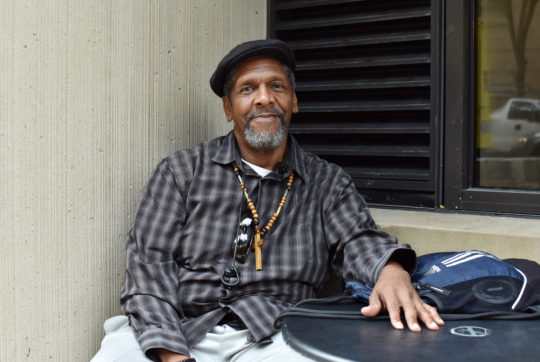
Martin spent nights trying to sleep outside of the park next to the GW Hospital but couldn’t get much more than a few hours of rest on the benches. But GW’s campus was where Martin said he formed friendships and found safety until ultimately finding a permanent home again in Adams Morgan, he said.
“GW, well it may not have provided me necessarily with services that I wanted, it provided me with the services I needed,” he said.
By Lia DeGroot | Read the full article
(Avi Bajpai contributed reporting)


The Briscoe family was one of 125 families recruited for the pilot program. Launched in September of 2017, D.C. Flex was developed by the D.C. Department of Human Services and Capital Area Asset Builders as an individualized housing assistance strategy. The program provides families living in apartments in the District with a subsidy that can be used to assist with rental payments or other household needs.
The goal of this type of program is to provide families a sense of self-sufficiency and allow them to adapt their assistance to their specific needs. While short-term emergency assistance programs are able to stabilize families quickly, they aren’t structured to provide security in the long-term. On the other hand, programs with a longer subsidy period often have fixed payments regardless of whether a family’s needs change.
By Maia Brown | Read the full article


Ten years ago an internist named Veronica Jenkins listened to multiple patients explain to her that they could not adhere to their HIV medication routine because they were struggling to gain stable housing. “Something about that just didn’t add up,” reflects Dr. Jenkins.
Shortly thereafter she founded Homes for Hope, a housing program for people with HIV and other chronic illnesses that has been been providing stability, support, and protection for some of D.C.’s most vulnerable residents for the last decade.
By Candace Y.A. Montague | Read the full article


About 6% of K-12 students in D.C. are homeless or housing-insecure — that’s almost double the students District officials counted in 2014.
Homelessness doesn’t just affect where students lie down and go to sleep at the end of the school day; homelessness can impact their academic performance, health, and social life.
D.C. schools offer help in the form of subsidized materials, transportation assistance, and more. But identifying the students who need help can be an obstacle.
Produced by Maura Currie | Listen here, live at 12:06 p.m.


Loud chants in Amharic, Spanish, and English filled the All Souls Unitarian church gymnasium on a Saturday afternoon in July. “Slumlords, you can’t hide! We can see your greedy side!” reverberated throughout the room, sustained by hundreds of renters from across the District.
The event was organized by the Latino Economic Development Center, a nonprofit that aims to promote financial stability for small business owners and renters by providing small business loans and credit building, as well as preserving housing affordability through tenant organizing.
By Meena Morar | Read the full article


Libraries in D.C. have long served homeless residents. Visiting the Martin Luther King Jr. Library downtown was a routine for so many homeless residents that its closure for renovations in 2017 left hundreds of regular visitors adrift.
In 2014, the D.C. Public Library system hired Jean Badalamenti as assistant manager of health and human services to help the city’s 25 libraries better serve as a resource for the city’s roughly 6,500 homeless residents.
Early last year, she pulled three “peer specialists,” from D.C.’s Department of Behavioral Health. The agency since 2004 has assembled a network of people certified to apply their experience with homelessness, substance abuse and other challenges to help people in similar circumstances.
By Mark Lieberman | Read the full article


Once finished, the new Ward 1 building will include 35 “apartment-style” short-term units for families in need of shelter and 15 permanent supportive housing units. In total, it will provide residence for up to 50 families experiencing homelessness.
But residents in a neighboring building say they did not know the city planned to build right up to the border of their condominium. They say
heir complaint has nothing to do with the shelter being put next door and that they want District residents to know how this project was pushed through despite organized requests for small but significant changes.
By Will Schick | Read the full article


I live in NoMa, just a 10-minute walk from the underpass encampments mentioned in the NoMa BID’s open letter. As someone who walks past the encampments daily, I was shocked to read the insensitive, dehumanizing letter penned by Robin-Eve Jasper, the NoMa BID President. Not only does the letter espouse common misconceptions about homelessness, its causes and solutions, but it also mischaracterizes the homeless community of NoMa as a dangerous “other.”
By Reina Sultan | Read the full article


On Wednesday, Aug. 25, the NoMA BID published an open letter saying that conditions were worsening in the underpass encampments and that “people are worried about their ability to safely traverse these public spaces.” The letter, signed by NoMA BID president Robin-Eve Jasper, detailed complaints residents had shared with the BID regarding the encampments and their residents, including: harassment, “aggressive panhandling,” used and bloody needles, rotting food, trash, broken glass, public nudity, prostitution, drug sales, and human excrement.
It called on NoMa residents to contact Ward 6 Councilmember Charles Allen, Mayor Muriel Bowser’s office, and Deputy Mayor for Health and Human Services Wayne Turnage.
It also caused an upswing in complaints to Turnage, who tells City Paper that his office got far more complaints after the BID letter came out than what he had received before, and that the recent communications largely echoed the letter
By Chelsea Cirruzzo | Read the full article


Inspired by the Latin word for “hope,” Spero Ministries, a new employment initiative in Georgetown, aims to provide temporary employment and training for D.C. residents that may struggle with job stability or require a supportive work environment. This includes people with a history of homelessness, trafficking, refugees, and people returning from prison. Beginning Sept. 8, Spero will run a coffee shop during the week inside Georgetown’s Veritas City Church on K Street NW between Wisconsin Avenue and Key Bridge.
By Maia Brown | Read the full article


Last month, local nonprofit Martha’s Table announced a new partnership with the Mayor’s Office on Returning Citizens’ Affairs to open its Outfitters program to returning citizens who are coming home to D.C. A credit card to Martha’s Table Outfitters is now included in the welcome home package MORCA provides, with no extra referral step or application process required.
Martha’s Table Outfitters allows members to shop in their boutique at no cost with a $40 credit card that reloads automatically each month. The shop offers baby items, children’s clothing, and professional adult clothing, with most items priced between $1 and $6. The card reloads indefinitely, so customers can continue to shop there long after they secure a job.
President and CEO Kim Ford said having a support system is one of the most important resources for men and women returning from the criminal justice system.
By Brianna Bilter | Read the full article


For someone who’s never experienced it, “going hungry” might conjure up Depression-era imagery; emaciated scavengers roaming the street in rags, for example. But 21st Century hunger in the U.S. looks very different, and you might not even know it if you saw it.
Local governments and advocates now calls hunger “food insecurity,” which is defined as inconsistent access to adequate food for a household. It’s hard to know exactly how many people experience food insecurity; in the District of Columbia, estimates suggest roughly 1 in 9 people or 1 in 7 families.
Produced by Maura Currie | Listen here, live at 12:32 p.m.


Mercedes Dones-Patricelli, a homeless outreach specialist for Pathways to Housing DC, works in a large, busy area of Northwest DC that extends from 16th Street to North Capitol Street. She is one of three members of the downtown outreach team for Pathways DC, a nonprofit organization that provides permanent housing as well as comprehensive mental health, addiction and medical services for more than 3,500 people a year who are experiencing homelessness or are at risk for homelessness.
By Catherine Lee | Read the full story


The subject of homeless encampments can be difficult to understand, and even more difficult to talk about. Encamped communities affect not just the people who live in them but those who live around them.
By Will Schick | Read the full article

2018 Reporting

More than 3 million Americans — 1.1 percent of the U.S. population — have schizophrenia, according to the National Institute of Mental Health. But within the homeless population, between a fifth and a third are believed to suffer from schizophrenia.
Schizophrenia is just one of the disabling disorders of the brain that are overrepresented in the homeless population. Depression, bipolar disorder and personality disorders, as well as developmental disabilities like autism, severe learning disorders and intellectual impairments, are all present within the homeless population. Anything that impacts thinking, judging and perceiving too often leads to homelessness.
In all likelihood the influence of mental illness on homelessness is severely understated. Even the doctors I walked with on the streets of DC while I served as executive director of the Georgetown Ministry Center were not able to diagnose mental illness in many cases without repeated visits.
Anosognosia — a lack of awareness of one’s mental health condition — affects about half of all people with serious mental illness.
I cannot tell you how frustrating it is to watch, as I have, over the past 30 years, as people grow old and die on the street because we do not have the tools we need to intervene.
By Gunther Stern | Read the full article

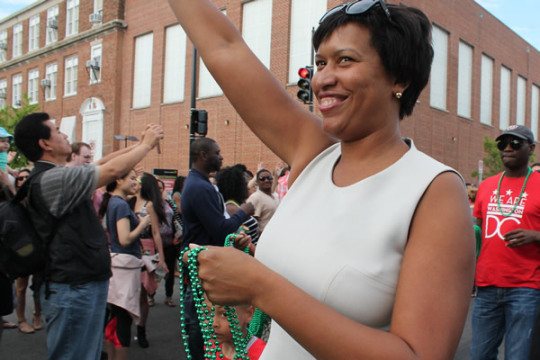
The D.C. Department of Human Services, which oversees the city’s homeless programs, has put in place policies and procedures to ensure that LGBT homeless people, both adults and youth, are treated with respect and receive the services they need, according to two department officials.
DHS spokesperson Dora Taylor said that since taking office in 2015, D.C. Mayor Muriel Bowser has made it known that aggressively addressing the city’s homeless problem, including specific issues pertaining to LGBT homeless people, are among her administration’s highest priority.
Taylor noted that among DHS’s actions since Bowser became mayor has been its implementation of the LGBTQ Homeless Youth Reform Amendment Act, which the D.C. Council passed unanimously in 2014. Council member Mary Cheh (D-Ward 3) and then-Council member Bowser (D-Ward 4) were the co-introducers of the legislation.
Taylor and DHS Senior Advisor Carter Hewgley said implementation of the law included a policy change adopted by DHS that requires all homeless shelters operated by the city or by city contractors to allow transgender people – youth or adults — seeking to enter a shelter to choose the one that is consistent with their gender identity.
By Lou Chibbaro Jr. | Read the full story

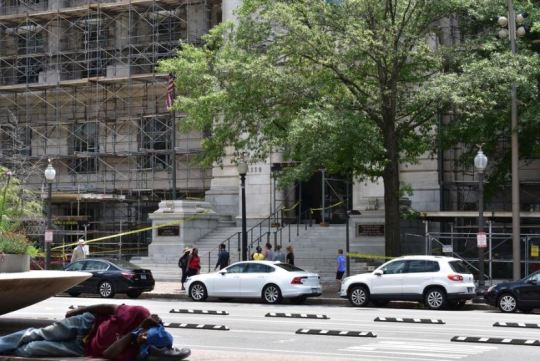
There is no formal tracking of nationwide mortality rates among the homeless, and advocates who work with homeless communities often struggle to get information when someone passes away.
“More often than not, we’ll hear through the grapevine that someone’s died,”
Reverend
Laing said. “It could take a while to put the pieces together, to find out if they had family or how to reach them.”
Once the pieces are put together, however, religious organizations and charities often step in to honor the lives of those who may have died without identification, or a readily identifiable next of kin. These same advocates, however, say cities need to do more to ensure that their residents have the dignity in death that they often weren’t provided in life.
“The person becomes a whole person again in death,” Laing said, “where, in life, they may have been just a number.”
By Molly McCluskey | Read the full story


Domestic violence housing programs generally want to create safe environments for women leaving abusive relationships. As part of a growing understanding about the needs of survivors, many of these programs in D.C. are reevaluating the rules and restrictions they have in place to accomplish that.
“You’re still being told what you can and cannot do and what’s best for you,” says S., a survivor of domestic violence in her mid-40s. “You’ve been so dictated to for so long, depending how long you’re in your relationship. That model really doesn’t fit—you can’t thrive out of that situation.”
For the past year and a half, S., who asked that we not use her full name to protect her privacy, has lived in apartment-style housing provided by the District Alliance for Safe Housing after leaving her husband of 10 years. That set-up is ideal for S., who had been used to running a household. She thinks living in a communal-style shelter would have made for a much tougher transition.
By Rachel Kurzius | Read the full story


The first LGBT youth-focused shelter in D.C. is continuing its legacy of serving one of the most vulnerable demographics.
The Wanda Alston House and Foundation, now in its 10th year of service, serves LGBT individuals ages 16-24. The residential home-turned-shelter currently houses eight people, and hundreds have been through its doors over the last decade. The house is named after the late Wanda Alston, a D.C.-based LGBT activist who was murdered near her home in 2005.
Individuals enter the program based on their level of vulnerability and what kind of care the city’s homeless management providers think will best fit that person’s circumstances. The facility provides 24-hour support for residents through counseling, mental and medical health services. Tuition assistance and professional development is provided and other life skill services such as learning how to balance a checkbook, shop for groceries and manage a credit score are also offered. Residents receive three meals a day, clothing and toiletries as well as other necessities like Metro cards.
By Abby Wargo | Read the full story


The H Street Service Center helps people seeking food assistance and Medicaid. Not even 30 minutes after the service center opened on a recent Wednesday morning, more than 100 people had filled nearly all the plastic blue chairs in the waiting room.
Advocates hope that a recent order from a federal judge means the experience at service centers like H Street soon won’t include worrying whether your benefits will be processed on time.
Last month Judge Christopher Cooper ruled the D.C. Department of Human Services must invest in resources to ensure that District residents who are food-insecure won’t have a long wait for food benefits…
By Meredith Roaten | Read the full story


At age 17, Dominique “Domo” Hardy was homeless and “living from pillow to post.” Now, he’s an advocate and mentor for other LGBT youth experiencing homelessness and adversity.
The 30-year-old D.C. native recalls fighting every day to survive in the streets alongside other gay teens also rejected by their families. At the time, Hardy says there were few resources in place to help kids like him, so he was forced to grow up fast and fend for himself with little to no support from the city.
Here, he answers The Washington Blade’s 20-question Queery interview.
By Grace Perry | Read the full story


The U.S. may not have made it to the World Cup this year, but nine DC high schoolers did. The students — all of whom have experienced or been at risk for homelessness — were honored by the DC Council last week for their participation in the 2018 Street Child World Cup in Russia.
The teens are all alums of DC SCORES, a group that creates neighborhood soccer teams that give kids in need the confidence and skills to succeed on the playing field, in the classroom, and in life, said Michael Holstein, DC SCORES’ director of marketing and communications.
Members of the all-female team that went to Russia range in age from 14 to 17. They were the first U.S. team ever to participate in the international competition, which has taken place twice before — in South Africa in 2010 and again in Brazil in 2014.
The group traveled to Moscow in May for the event, which sought to highlight the plight of homeless and economically disadvantaged children worldwide.
By Kate Oczypok | Read the full story


D.C. Central Kitchen is partnering with Building Bridges across the River at THEARC to bring new services to THEARC’s Ward 8 campus, including workforce development for youth age 18-25.
The nonprofit’s core training program has typically enrolled people aged 35-50, according to D.C. Central Kitchen’s chief development officer, Alexander Moore. Their most recent annual report cited an 87 percent success rate for placing trainees in a job in 2017. Moore said the expansion was considered when data revealed D.C.’s youth are increasingly at risk of being left out of the local economy.
More than 14.8 percent of D.C. youth are “disconnected,” from a job or school enrollment, which is above the national average, according to a 2018 “Measure of America” report. Thirty-eight states improved their rates of disconnection while Nebraska and D.C. were the only areas where the percentage increased during an 8-year time period. The District’s rate increased by more than 50 percent.
By Meredith Roaten | Read the full story


Like all residents of this place, she does not want to be here. The building is stuffy, she says, and she fears it’s making her child’s asthma worse. More than that, she fears he’s losing out on crucial resources. Giovanni is nonverbal and autistic, and the shelter doesn’t allow for home health aides to come in and provide him with needed services, she says. “We have paperwork from his school showing how you can see the change in his behavior from April [when we moved in] to now. He hit a kid at school,” she says.
But even though she doesn’t want to live here, Hunter says she is angry about feeling shoved out. She motions around her to the fencing closing in on the children’s playground, mounds of dirt piled where construction crews have started digging. She points in the distance to a building on campus that will be torn down soon, with residents of the shelter living right next door.
“I think it’s very disrespectful that they’re doing this [construction work] before everyone has moved out,” says Hunter.
BY Natalie Delgadillo | Read the full story


During the early 1990s, Ruby Corado spent most nights in public parks throughout D.C., trying to meet the basic needs of the homeless LGBT youth who had no safe space to go after 5 p.m. when the HIV clinics closed.
And so the movement began.
Now, 26 years later, Corado is the director of Casa Ruby, a local bilingual and multicultural organization founded in 2012 that provides housing and social services to LGBT individuals 24 hours a day.
The transgender El Salvador native says Casa Ruby started as an “emergency room.”
By Grace Perry | Read the full story


Several years ago, Patricia Hunt needed relief from her back pain. Her mother soon offered it—in the form of opioids.
Hunt, now 56, began taking them regularly, becoming so reliant on the drugs that family members urged her more than once to go to rehab. Yet hospital staff told Hunt’s sister that they couldn’t help her until she “hit rock-bottom.”
By 2015, Hunt sat behind bars in a federal prison for drug-related charges. There, the Woodbridge resident says she finally received the help she needed, getting sober and exploring the circumstances—including enduring “several different types of abuse”—that led to her self-destructive lifestyle. When she transitioned to a D.C. halfway house shortly after her 2016 release, she learned of a chance to start over with a job-readiness and empowerment program in Alexandria serving women who are formerly incarcerated or experiencing homelessness, Together We Bake. Within days, she was a student.
For Hunt and the roughly 130 women who have graduated from the program since it launched seven years ago, TWB has been a game-changer.
By
Eliza Berkon | Read the full story
